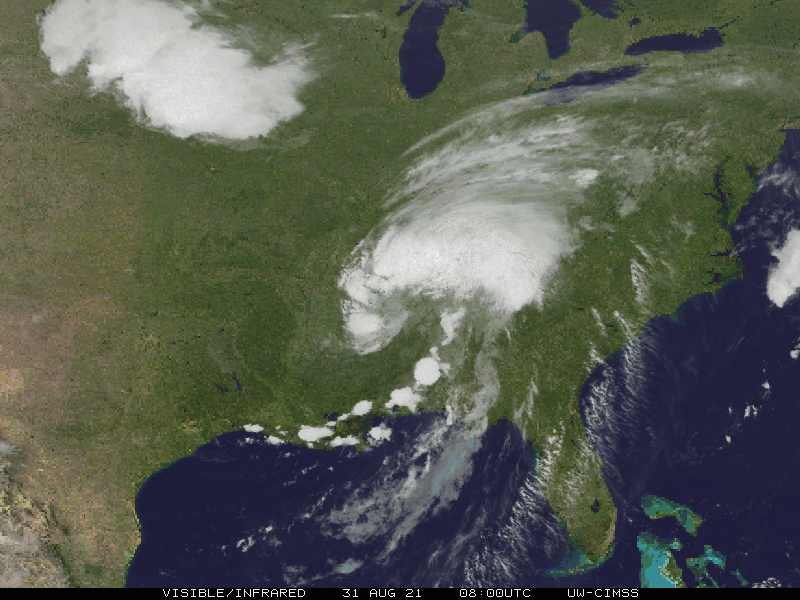Hurricane Ida causes catastrophic damage to Louisiana nearly 20 years after Hurricane Katrina
Ida was ranked as a Category 4 hurricane according to the Saffir-Simpson Hurricane Wind Scale. Hurricanes in this category cause catastrophic damage to the regions hit.
Hurricane Ida made landfall on Aug. 29 as a Category 4 (130 to 156 mph winds) storm with a surge of 12 to 16 feet, and winds gusting as high as 172 miles per hour. The storm left more than one million people without power and arrived on the 16th anniversary of the massive and destructive Hurricane Katrina. Hurricane Ida was the twelfth hurricane to hit in an already busy hurricane season. The storm made its way across the southern U.S. and to the northeast, leaving more than 40 people dead in New York before reaching the Atlantic Ocean.
Hilltop Views interviewed Katherine Cochran, a longtime resident of the city of New Orleans. Video chatting with her from Atlanta, GA. where she and her fiancée relocated just before the storm reached the Louisiana coast, Cochran described in detail the hurricane and how it compared to previous ones she experienced (including Hurricane Katrina in 2005). A big difference, according to Cochran, was in the billions of federal dollars in investments to the levee system which held and protected the city from flooding, and the preparation by residents who had lived through Hurricane Katrina.
Another big difference between Hurricane Ida and previous storms is the attention this storm got from crisis-fatigued Americans. With COVID-19 , Afghanistan, climate-fueled fires and other crises vying for collective attention, Ida and the damage left in its wake quickly became a distant memory. According to Cochran, the coverage that Hurricane Ida received depicted a need for help but did not convey a full understanding of the horror of being in the midst of a natural disaster.
“The news is covering things in a dramatic way which is good for bringing assistance. It’s kind of telling everybody, ‘We need help.’ But they’re still not really feeling it.” Cochran said. Compounding the already devastating state Louisiana is in, many are still suffering the consequences days after the storm. Louisiana is heavily dependent on tourism to support its economy, and until electricity, buildings and lives are restored, the state and its people will continue to suffer.
Financial resources such as the Hilltopper Help Line, Aunt Bertha, Emergency Aid Fund and the HOOF Fund are available to students impacted by the disaster.
St. Edward’s Vice President of Student Affairs Lisa Kirkpatrick In response to whether Americans are feeling a sense of crisis-fatigue and that it has become more challenging to keep people engaged and to gain sympathy and support for crises of this nature due to our seemingly limited attention spans, Kirkpatrick shared, “I think of it as compassion fatigue.” As a community that is shaped around being of service to one another, standing by each other, with “some trained in compassion fatigue,” in times such as these, it is important to remember to take care of not only one another, but ourselves. Dr. Kirkpatrick reiterated financial resources available during this time such as the Hilltopper Help Line, Aunt Bertha, Emergency Aid Fund, and the HOOF Fund.







